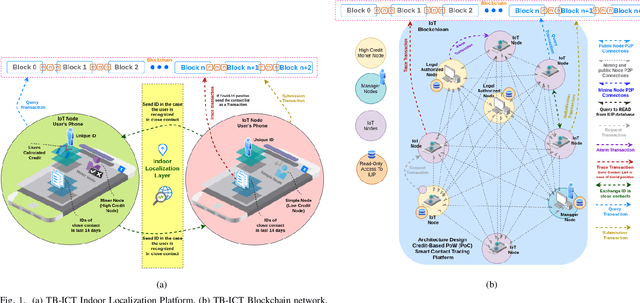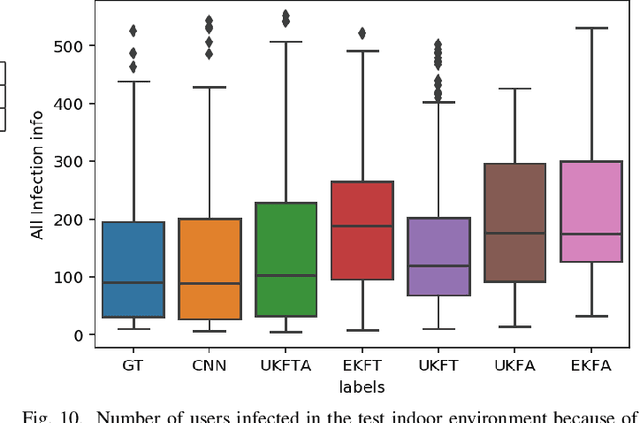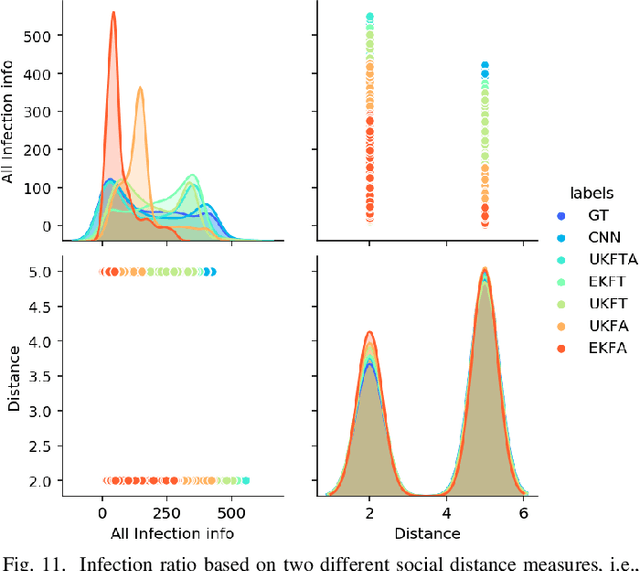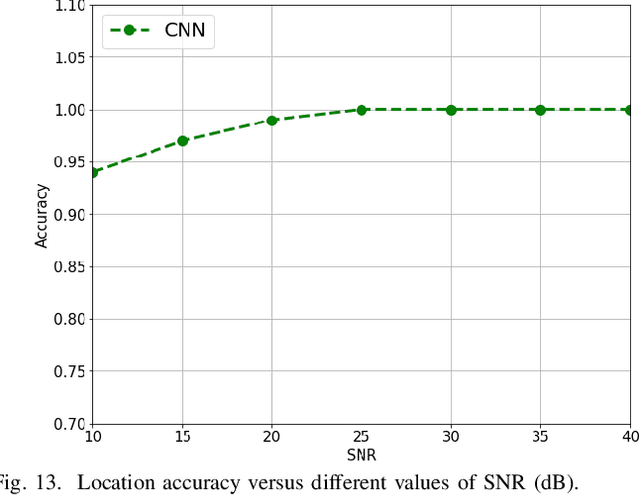Zohreh Hajiakhondi-Meybodi
CLSA: Contrastive Learning-based Survival Analysis for Popularity Prediction in MEC Networks
Mar 21, 2023



Abstract:Mobile Edge Caching (MEC) integrated with Deep Neural Networks (DNNs) is an innovative technology with significant potential for the future generation of wireless networks, resulting in a considerable reduction in users' latency. The MEC network's effectiveness, however, heavily relies on its capacity to predict and dynamically update the storage of caching nodes with the most popular contents. To be effective, a DNN-based popularity prediction model needs to have the ability to understand the historical request patterns of content, including their temporal and spatial correlations. Existing state-of-the-art time-series DNN models capture the latter by simultaneously inputting the sequential request patterns of multiple contents to the network, considerably increasing the size of the input sample. This motivates us to address this challenge by proposing a DNN-based popularity prediction framework based on the idea of contrasting input samples against each other, designed for the Unmanned Aerial Vehicle (UAV)-aided MEC networks. Referred to as the Contrastive Learning-based Survival Analysis (CLSA), the proposed architecture consists of a self-supervised Contrastive Learning (CL) model, where the temporal information of sequential requests is learned using a Long Short Term Memory (LSTM) network as the encoder of the CL architecture. Followed by a Survival Analysis (SA) network, the output of the proposed CLSA architecture is probabilities for each content's future popularity, which are then sorted in descending order to identify the Top-K popular contents. Based on the simulation results, the proposed CLSA architecture outperforms its counterparts across the classification accuracy and cache-hit ratio.
JUNO: Jump-Start Reinforcement Learning-based Node Selection for UWB Indoor Localization
May 06, 2022



Abstract:Ultra-Wideband (UWB) is one of the key technologies empowering the Internet of Thing (IoT) concept to perform reliable, energy-efficient, and highly accurate monitoring, screening, and localization in indoor environments. Performance of UWB-based localization systems, however, can significantly degrade because of Non Line of Sight (NLoS) connections between a mobile user and UWB beacons. To mitigate the destructive effects of NLoS connections, we target development of a Reinforcement Learning (RL) anchor selection framework that can efficiently cope with the dynamic nature of indoor environments. Existing RL models in this context, however, lack the ability to generalize well to be used in a new setting. Moreover, it takes a long time for the conventional RL models to reach the optimal policy. To tackle these challenges, we propose the Jump-start RL-based Uwb NOde selection (JUNO) framework, which performs real-time location predictions without relying on complex NLoS identification/mitigation methods. The effectiveness of the proposed JUNO framework is evaluated in term of the location error, where the mobile user moves randomly through an ultra-dense indoor environment with a high chance of establishing NLoS connections. Simulation results corroborate the effectiveness of the proposed framework in comparison to its state-of-the-art counterparts.
DQLEL: Deep Q-Learning for Energy-Optimized LoS/NLoS UWB Node Selection
Aug 24, 2021



Abstract:Recent advancements in Internet of Things (IoTs) have brought about a surge of interest in indoor positioning for the purpose of providing reliable, accurate, and energy-efficient indoor navigation/localization systems. Ultra Wide Band (UWB) technology has been emerged as a potential candidate to satisfy the aforementioned requirements. Although UWB technology can enhance the accuracy of indoor positioning due to the use of a wide-frequency spectrum, there are key challenges ahead for its efficient implementation. On the one hand, achieving high precision in positioning relies on the identification/mitigation Non Line of Sight (NLoS) links, leading to a significant increase in the complexity of the localization framework. On the other hand, UWB beacons have a limited battery life, which is especially problematic in practical circumstances with certain beacons located in strategic positions. To address these challenges, we introduce an efficient node selection framework to enhance the location accuracy without using complex NLoS mitigation methods, while maintaining a balance between the remaining battery life of UWB beacons. Referred to as the Deep Q-Learning Energy-optimized LoS/NLoS (DQLEL) UWB node selection framework, the mobile user is autonomously trained to determine the optimal pair of UWB beacons to be localized based on the 2-D Time Difference of Arrival (TDoA) framework. The effectiveness of the proposed DQLEL framework is evaluated in terms of the link condition, the deviation of the remaining battery life of UWB beacons, location error, and cumulative rewards. Based on the simulation results, the proposed DQLEL framework significantly outperformed its counterparts across the aforementioned aspects.
TB-ICT: A Trustworthy Blockchain-Enabled System for Indoor COVID-19 Contact Tracing
Aug 09, 2021



Abstract:Recently, as a consequence of the COVID-19 pandemic, dependence on Contact Tracing (CT) models has significantly increased to prevent spread of this highly contagious virus and be prepared for the potential future ones. Since the spreading probability of the novel coronavirus in indoor environments is much higher than that of the outdoors, there is an urgent and unmet quest to develop/design efficient, autonomous, trustworthy, and secure indoor CT solutions. Despite such an urgency, this field is still in its infancy. The paper addresses this gap and proposes the Trustworthy Blockchain-enabled system for Indoor Contact Tracing (TB-ICT) framework. The TB-ICT framework is proposed to protect privacy and integrity of the underlying CT data from unauthorized access. More specifically, it is a fully distributed and innovative blockchain platform exploiting the proposed dynamic Proof of Work (dPoW) credit-based consensus algorithm coupled with Randomized Hash Window (W-Hash) and dynamic Proof of Credit (dPoC) mechanisms to differentiate between honest and dishonest nodes. The TB-ICT not only provides a decentralization in data replication but also quantifies the node's behavior based on its underlying credit-based mechanism. For achieving high localization performance, we capitalize on availability of Internet of Things (IoT) indoor localization infrastructures, and develop a data driven localization model based on Bluetooth Low Energy (BLE) sensor measurements. The simulation results show that the proposed TB-ICT prevents the COVID-19 from spreading by implementation of a highly accurate contact tracing model while improving the users' privacy and security.
 Add to Chrome
Add to Chrome Add to Firefox
Add to Firefox Add to Edge
Add to Edge